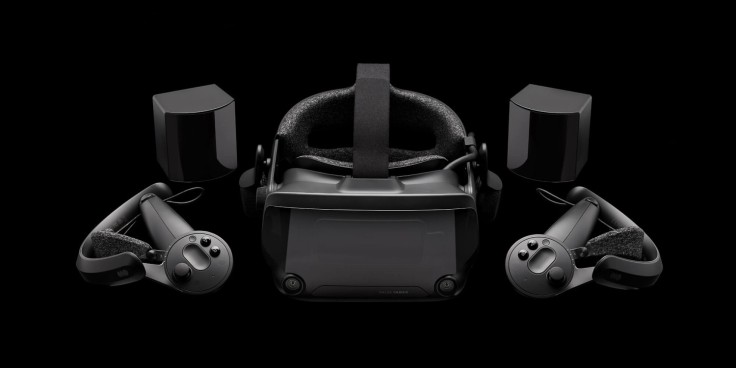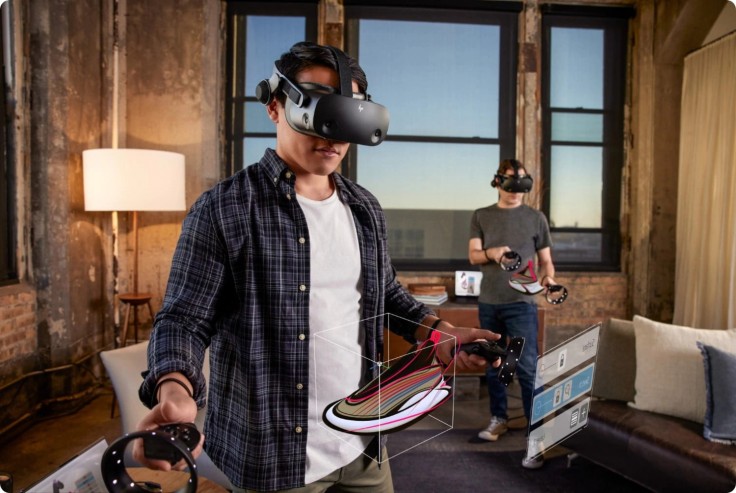Virtual reality (VR) headsets are one of the most popular pieces of electronics in the 21st century. Thanks to recent innovations in visuals, tracking, and overall performance of VR headsets, the once niche and expensive gadget is now affordable enough or the general public to get, per CNET.
However, with so many VR headsets out there to choose from, getting the right one for yourself, regardless of whether a budget is involved, could prove difficult without the proper knowledge.
Here are three of the best VR headsets out there that may suit your needs:
Oculus Quest 2 - $299

The Oculus Quest 2, or Meta Quest 2 as others would call it, is perhaps the best and most affordable VR headset on the market. According to Oculus, it doesn't require cables to connect to your computer, has a sharp display, and has a powerful processor in the form of Qualcomm Snapdragon XR2 Platform. These specifications and the fact that it doesn't need a camera to track your movements make this VR headset a must-have for beginners and experienced users alike.
The Oculus Quest 2 also has a fast-switch LCD with a configurable refresh rate of 60Hz-72Hz, and a memory of 6GB.
However, interested and current customers should keep this VR headset's short 2-3 hours of battery life, per Stealth Optional.
Additionally, you'll need a Facebook account to use the device, which could dampen anyone's VR headset interest in terms of privacy. Facebook's parent company, Meta, isn't well known for its privacy practices.
Valve Index - $999

The Valve Index VR Headset may be one of if not the most expensive of the bunch, but having the best visuals of any mainstream, commercially available VR headset and a display to outmatch its competitors makes the price tag justifiable, in our opinion.
Read More : China To Seek Region-Wide Deal With pacific Island Countries on Cyber Defenses and Networks
According to PC Gamer and Valve, the Valve Index has a 120Hz refresh rate which could go up to 144Hz in the future, a 130-degree field of vision, 1440x1600 LCDs for its display, and optics that have a double element canted lens design that doesn't have any detectable screen dor effect. These specifications alone tell you that the Valve Index is one of the VR headsets with the best visuals.
It is also comfortable, albeit heavy, to wear. Its weight distribution is good enough that it makes the headset's weight noticeable but not uncomfortable.
The VR headset also has built-in near-field speakers paced next to your ears that don't produce pressure on them.
However, it needs two base station sensors or cameras to track your movements, and the VR headset could be a pain to set up, with you needing to access Steam before wearing the headset to get you up and running. However, the VR games available on Steam are a good enough cause to create a Steam account for yourself.
HP Reverb G2 - $562-$599 on Amazon

The HP Reverb G2 is the middle ground between the Oculus Quest 2 and the Valve Index VR headsets in terms of price and performance.
According to HP, it is a tethered headset that has a 90Hz refresh rate that has a 2 x 2.89-inch LCD screen with a 2160x2160 resolution per eye.
It has a fantastic resolution for gamers looking for a detailed look at the VR world if they have a powerful enough GPU to handle it. However, what makes this headset croak differently from the other headsets is that its Mixed Reality controllers are not as great to use as additional controllers, and managing its cables - from the cable connecting it to your computer and the one to its own supply - is difficult at best, per Engadget.
Setting up this VR headset can also be a nightmare if you're pressed for time, requiring 10 minutes to get it set up and running and to get it comfortable on your head to use it.
Additionally, it is heavy to use and needs cameras to track your movements. However, these cameras have issues of their own, providing only a small sweet spot for them to operate at optimum levels. The VR headset also has problems with AMD-based PCs per Tech Advisor.
The HP Reverb 2 works wonders when you hit the sweet spot, but looking for where the sweet spot is and staying there is a problem of its own.









